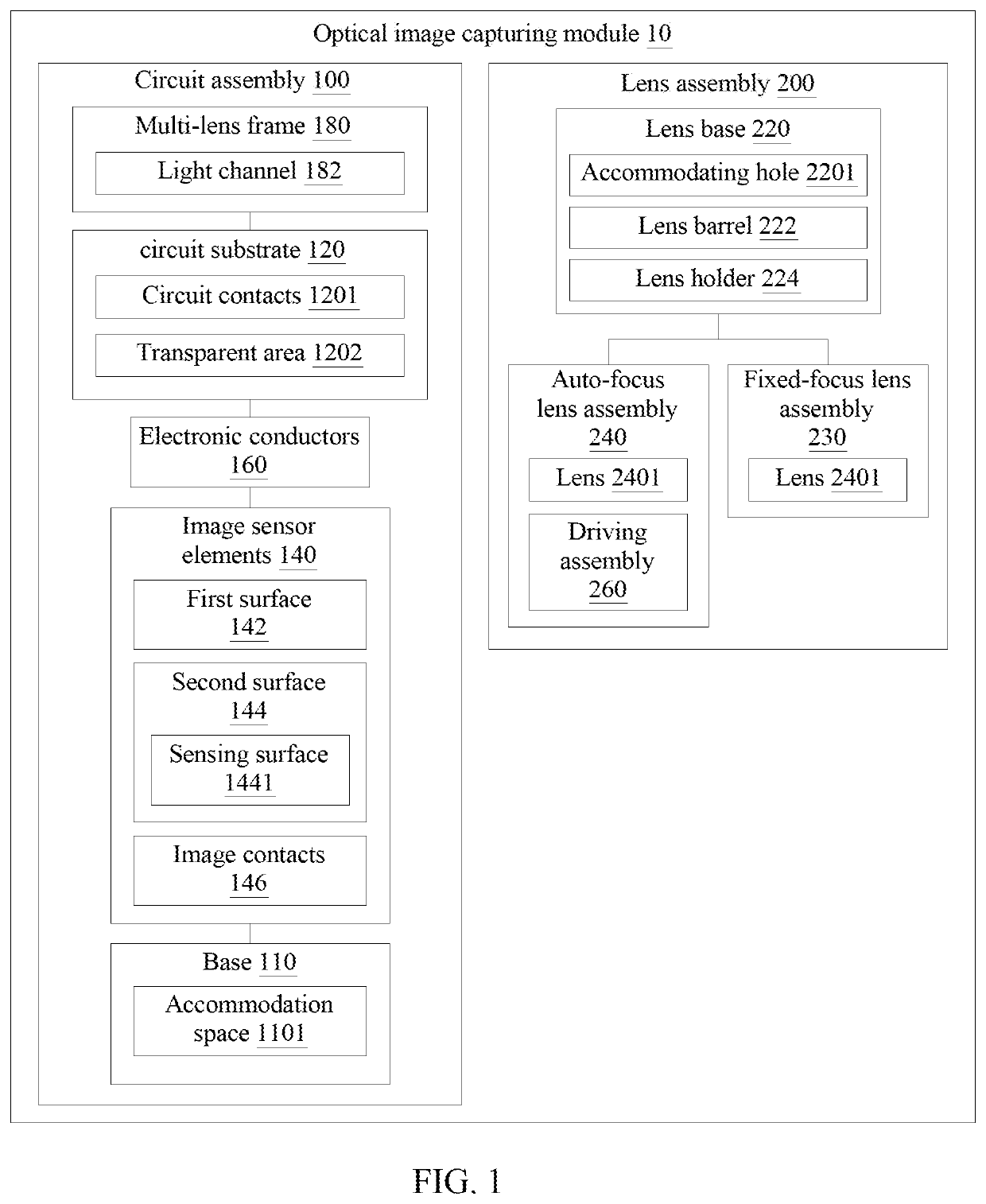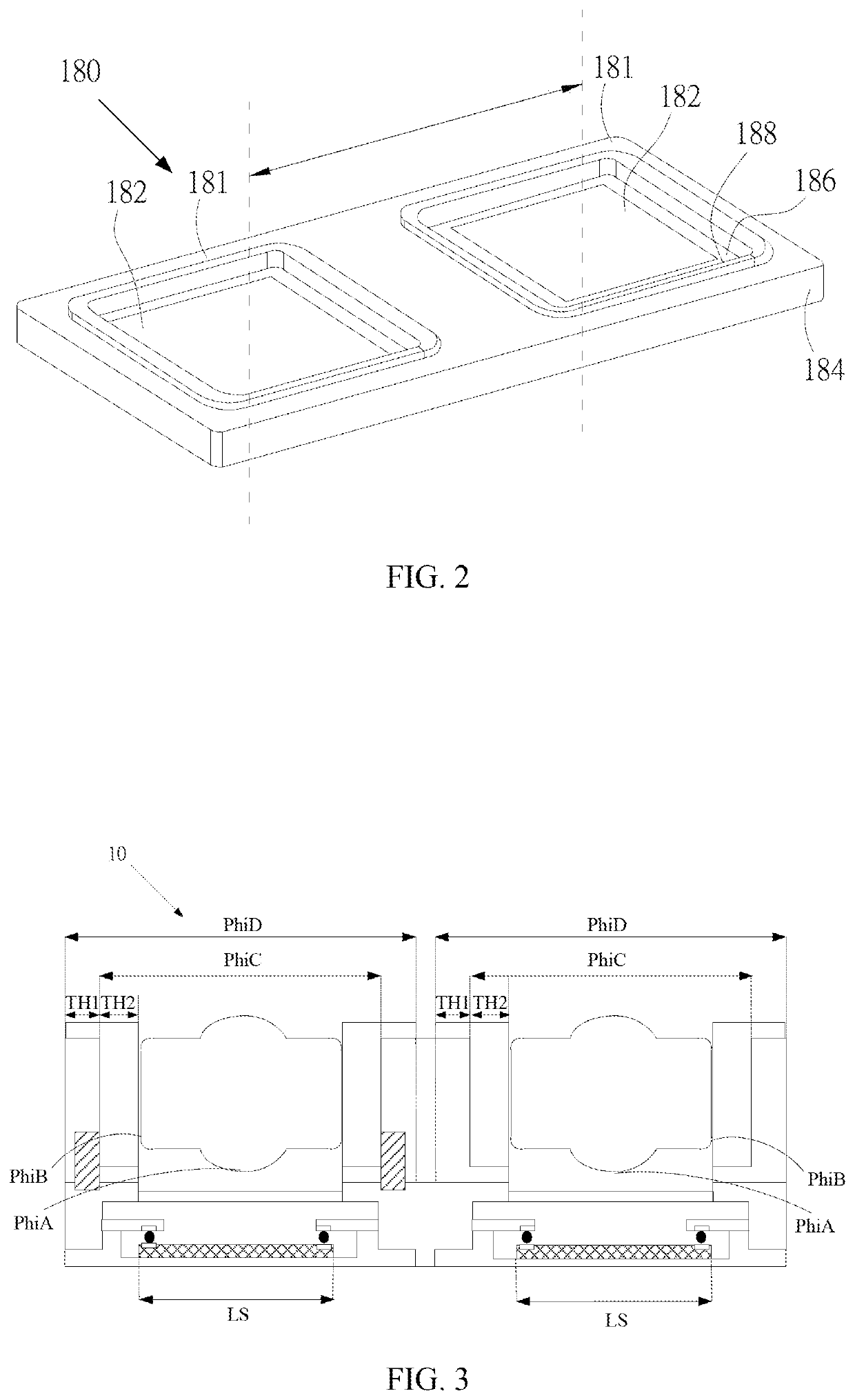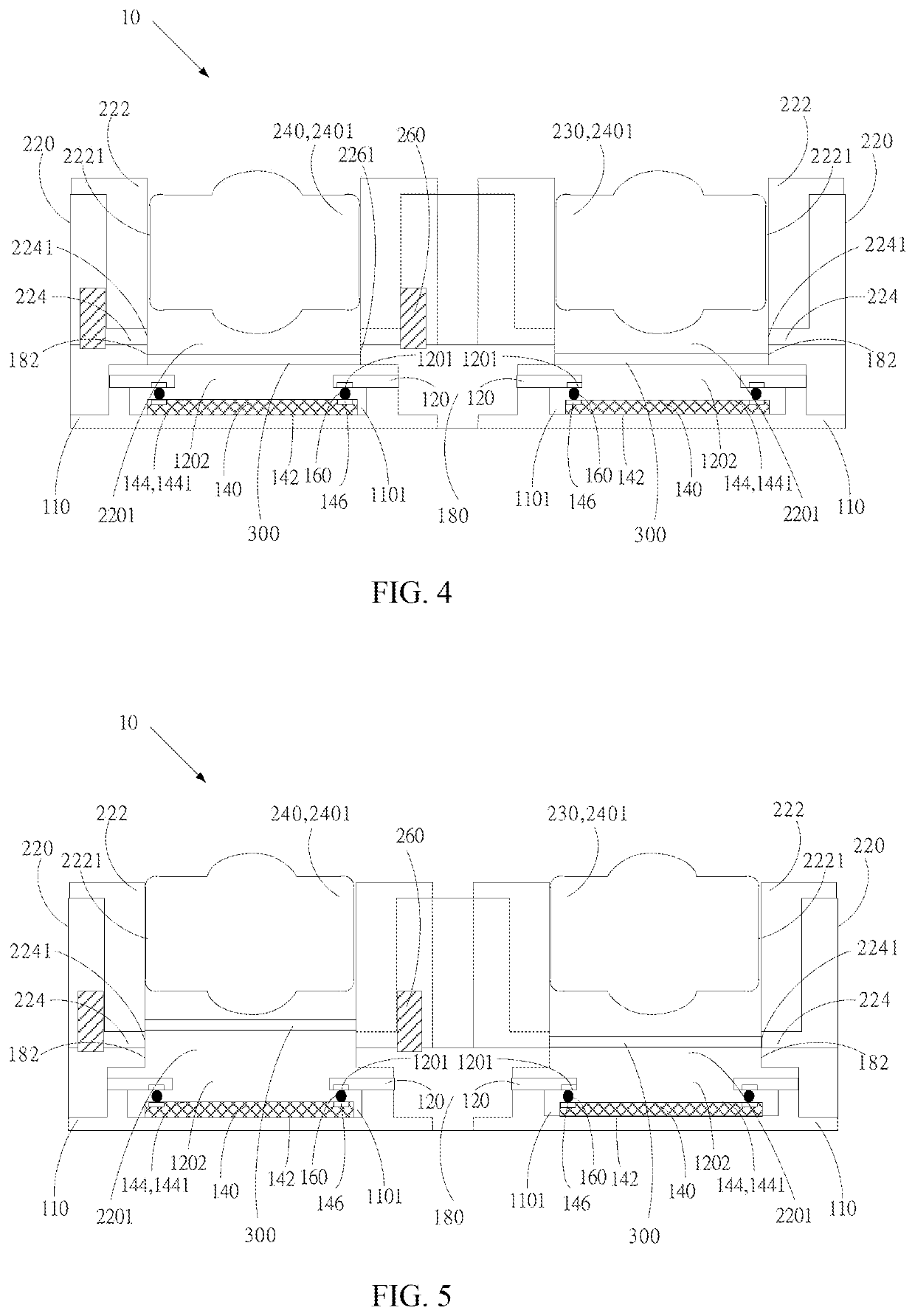Optical image capturing module
a technology of optical image and module, applied in the direction of printers, radiation control devices, camera focusing arrangement, etc., can solve the problems of difficult management of assembling and packaging quality of all components, many problems identified but not solved, etc., to achieve the effect of enhancing image quality and reducing the difficulty of light path regulating ability
- Summary
- Abstract
- Description
- Claims
- Application Information
AI Technical Summary
Benefits of technology
Problems solved by technology
Method used
Image
Examples
first optical embodiment
The First Optical Embodiment
[0193]As shown in FIG. 18, each of the fixed-focus lens assembly 230 and the auto-focus lens assembly 240 respectively include six lenses 2401 with refractive power, and includes a first lens 2411, a second lens 2421, a third lens 2431, a four lens 2441, a fifth lens 2451, and a sixth lens 2461 sequentially displayed from an object side surface to an image side surface. Each of the fixed-focus lens assembly 230 and the auto-focus lens assembly 240 satisfies the following condition: 0.1≤InTL / HOS≤0.95. Specifically, HOS is the distance on the optical axis from an object side surface of the first lens to the image plane; InTL is the distance on the optical axis from an object side surface of the first lens 2411 to an image side surface of the sixth lens 2461.
[0194]Please refer to FIGS. 20 and 21. FIG. 20 is a schematic view of an optical image capturing module according to the first embodiment in the present invention. FIG. 21 is curve diagrams of spherical ...
second optical embodiment
The Second Optical Embodiment
[0259]As shown in FIG. 19, each of the fixed-focus lens assembly 230 and the auto-focus lens assembly 240 may respectively include seven lenses 2401 with refractive power, and include a first lens 2411, a second lens 2421, a third lens 2431, a four lens 2441, a fifth lens 2451, a sixth lens 2461, and a seventh lens 2471 sequentially displayed from an object side surface to an image side surface. Each of the fixed-focus lens assembly 230 and the auto-focus lens assembly 240 satisfies the following condition: 0.1≤InTL / HOS≤0.95. Specifically, HOS is the distance from an object side surface of the first lens 2411 to the imaging surface on an optical axis, and InTL is the distance from an object side surface of the first lens 2411 to an image side surface of the seventh lens 2471 on an optical axis.
[0260]Please refer to FIG. 22 and FIG. 23. FIG. 22 is a schematic diagram of the optical image capturing module according to the second optical embodiment of the p...
third optical embodiment
The Third Optical Embodiment
[0280]As shown in FIG. 18, each of the fixed-focus lens assembly 230 and the auto-focus lens assembly 240 may respectively include six lenses 2401 with refractive power, and include a first lens 2411, a second lens 2421, a third lens 2431, a four lens 2441, a fifth lens 2451, and a sixth lens 2461 sequentially displayed from an object side surface to an image side surface. Each of the fixed-focus lens assembly 230 and the auto-focus lens assembly 240 satisfies the following condition: 0.1≤InTL / HOS≤0.95. Specifically, HOS is the distance from an object side surface of the first lens 2411 to the imaging surface on an optical axis; InTL is the distance from an object side surface of the first lens 2411 to an image side surface of the sixth lens 2461 on an optical axis.
[0281]Please refer to FIG. 24 and FIG. 25. FIG. 24 is a schematic diagram of the optical image capturing module according to the third optical embodiment of the present invention. FIG. 25 is a ...
PUM
| Property | Measurement | Unit |
|---|---|---|
| distance | aaaaa | aaaaa |
| distance | aaaaa | aaaaa |
| field of view | aaaaa | aaaaa |
Abstract
Description
Claims
Application Information
 Login to View More
Login to View More - R&D Engineer
- R&D Manager
- IP Professional
- Industry Leading Data Capabilities
- Powerful AI technology
- Patent DNA Extraction
Browse by: Latest US Patents, China's latest patents, Technical Efficacy Thesaurus, Application Domain, Technology Topic, Popular Technical Reports.
© 2024 PatSnap. All rights reserved.Legal|Privacy policy|Modern Slavery Act Transparency Statement|Sitemap|About US| Contact US: help@patsnap.com










